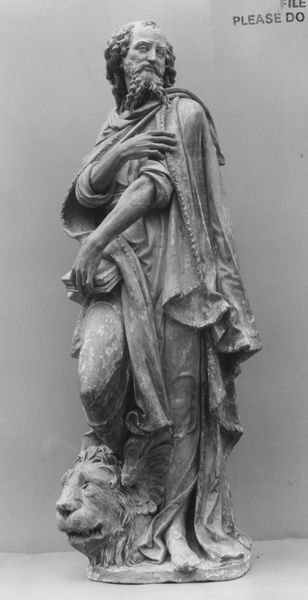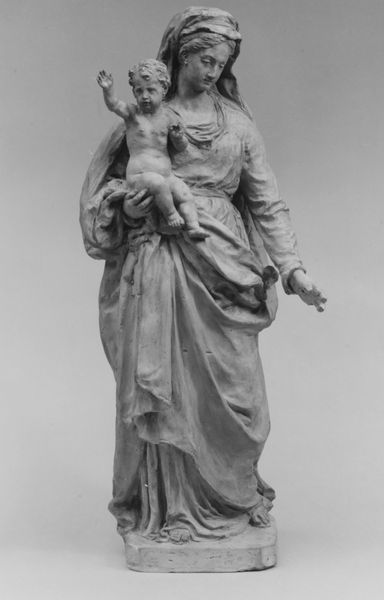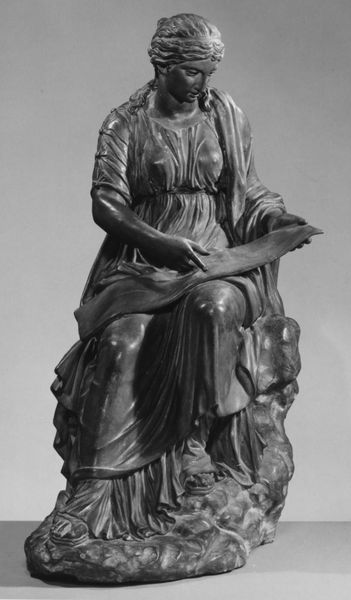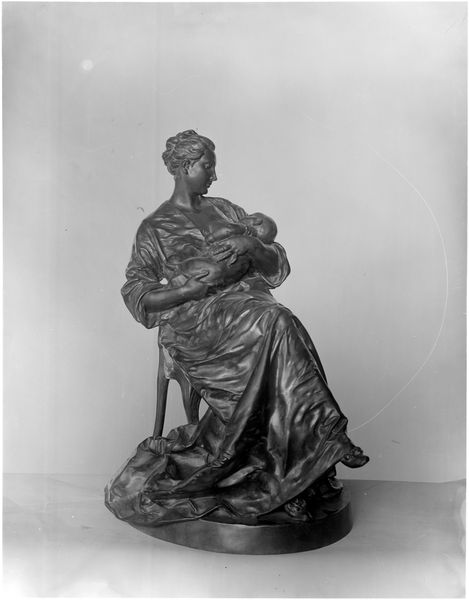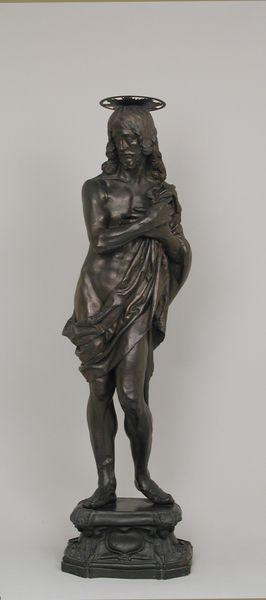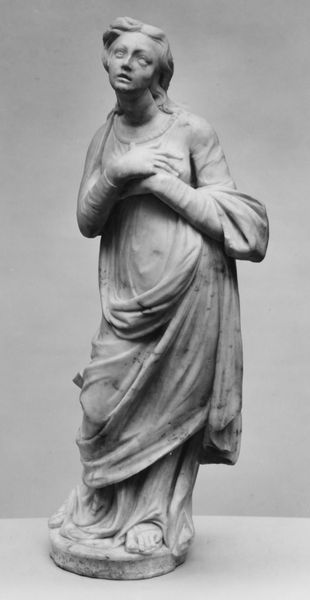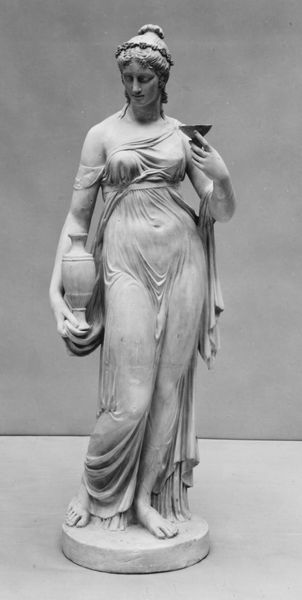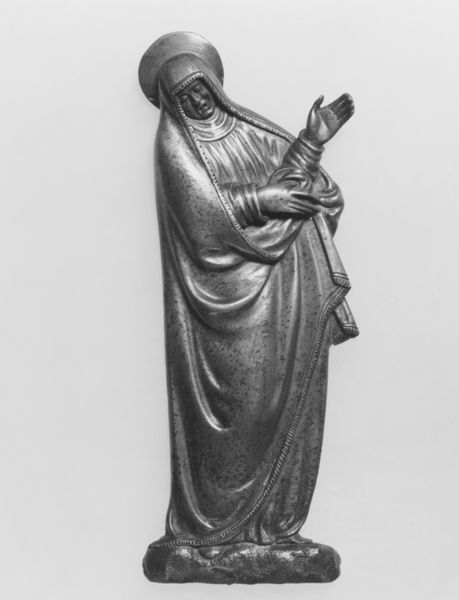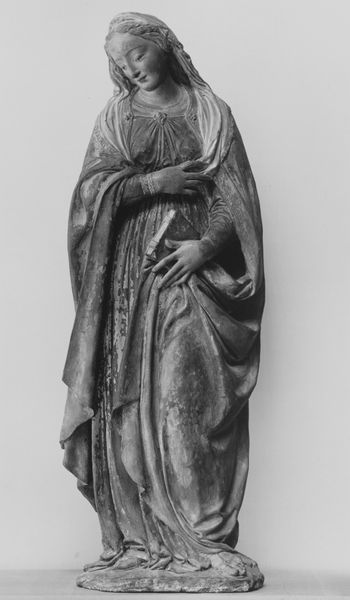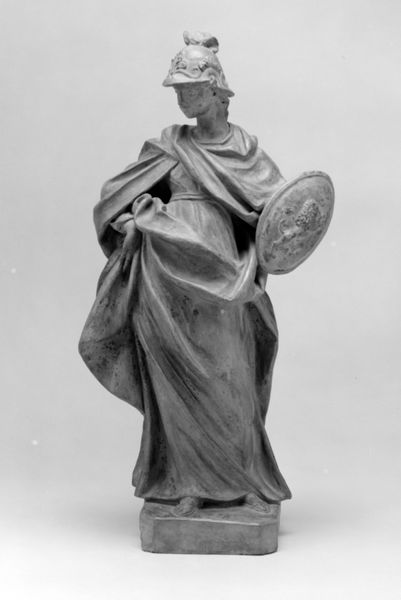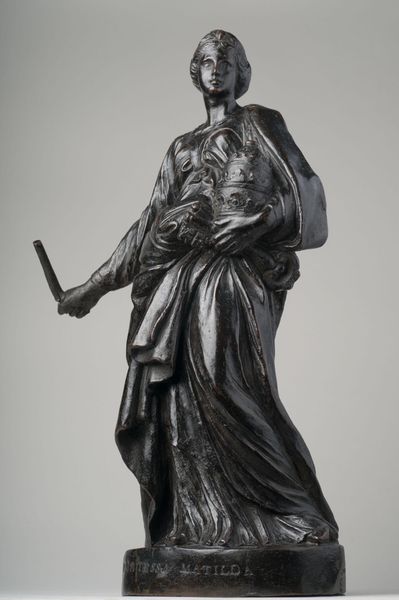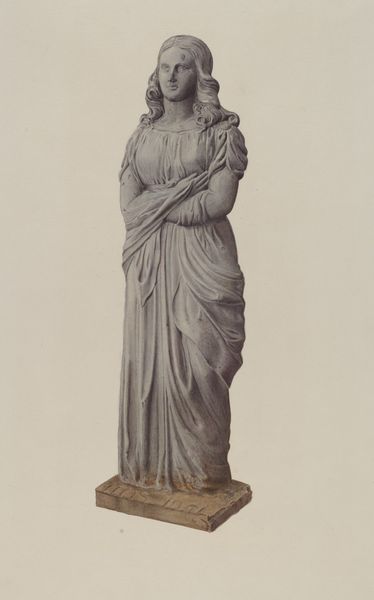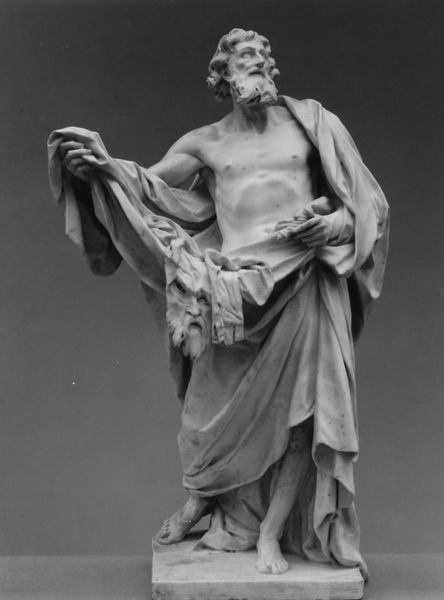
sculpture, wood
#
portrait
#
neoclacissism
#
sculpture
#
figuration
#
sculpture
#
wood
Copyright: Public Domain
Editor: So this is an "Untitled" wood sculpture by Simeon Skillin, made between 1787 and 1790. The figure's gaze is very direct, and the drapery has so much movement! How would you interpret this work? Curator: This sculpture, situated within the era of Neoclassicism, offers a fascinating glimpse into the construction of identity and gender. How does this idealized form relate to actual lived experiences, especially considering the socio-political contexts of the late 18th century in which the work was created? Does it offer agency, or perpetuate certain hegemonic ideas? Editor: I see what you mean. It's idealized, but what's the message? Curator: The figure's self-possessed stance and classical garb suggests a symbolic representation of liberty or perhaps civic virtue, reflecting Enlightenment ideals that were shaping revolutionary sentiments. But whom did it serve and for what purpose? Was the Neoclassical style here adopted to legitimise a political idea or ideal, or, conversely, might it have presented opportunities to challenge existing norms? Do you consider the gaze to be inviting? Editor: Now that I think about it, her hand covers her chest as if to protect it from that gaze... It feels as if she's simultaneously exposed and covered. Curator: Exactly! That tension you're sensing gets to the heart of understanding the contradictions inherent in how women, their bodies, and their social roles, were perceived at that time. Do you see the male gaze operating here? And how the classical influence is related? Editor: I didn't consider the gendered gaze before. I assumed classical sculpture was naturally dignified and beautiful. Curator: This is where it becomes critical to examine the power structures and assumptions underlying what we consider beautiful. That helps me question everything in our contemporary context. Editor: So, by examining the sculpture's historical context and challenging established perspectives, we gain insight into how these issues relate to gender, politics, and identity. Thanks!
Comments
No comments
Be the first to comment and join the conversation on the ultimate creative platform.
